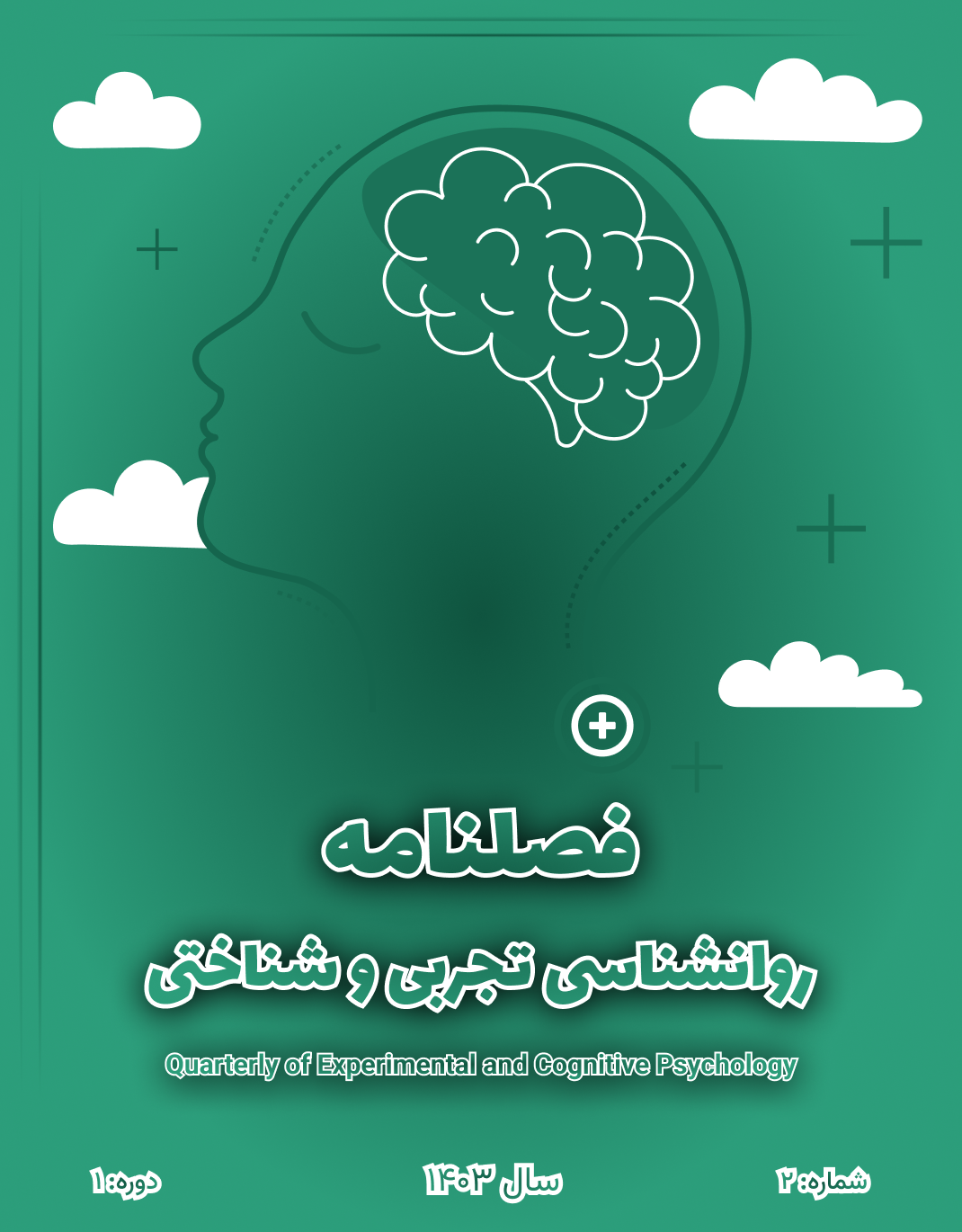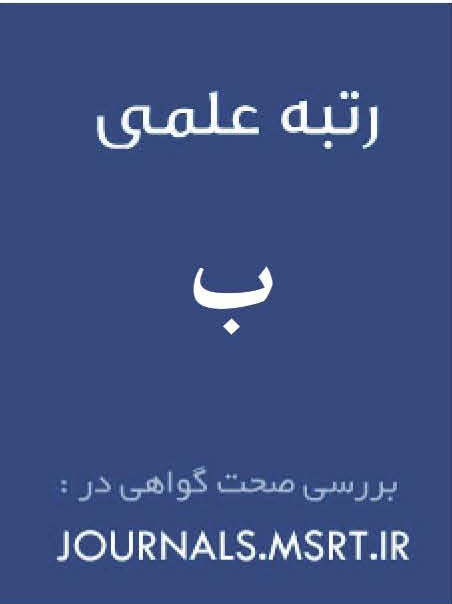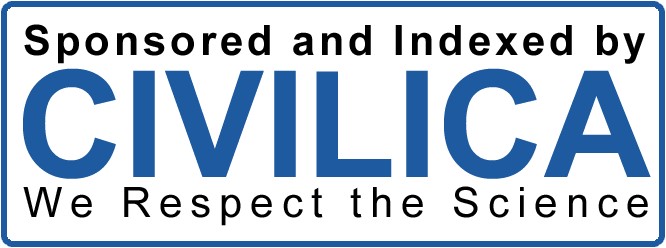رابطه خودآگاهی هیجانی و حمایت اجتماعی ادراک شده با تصویر بدنی در دانشجویان دانشگاه آزاد اسلامی واحد رشت
کلمات کلیدی:
خودآگاهی هیجانی, برنامه های آموزشی, ارزشیابی, دانشجویان دانشگاه آزاد اسلامی واحد رشتچکیده
هدف: هدف از پژوهش حاضر بررسی رابطه بین خودآگاهی هیجانی و حمایت اجتماعی ادراکشده با تصویر بدنی در دانشجویان دانشگاه آزاد اسلامی واحد رشت بود.
روشها و مواد: پژوهش حاضر از نوع توصیفی-همبستگی با رویکرد کمی بود. جامعه آماری شامل تمامی دانشجویان دانشگاه آزاد اسلامی واحد رشت در سال تحصیلی ۱۴۰۳–۱۴۰۴ بود که تعداد آنها حدود ۱۷٬۷۰۰ نفر برآورد شد. حجم نمونه با استفاده از فرمول کوکران ۳۷۶ نفر تعیین شد و نمونهها به روش نمونهگیری در دسترس انتخاب شدند. ابزارهای جمعآوری داده شامل پرسشنامه تصویر بدنی مککینلی و هاید (۱۹۹۶)، پرسشنامه خودآگاهی هیجانی گرنت و همکاران (۲۰۰۲)، و مقیاس چندبعدی حمایت اجتماعی ادراکشده زیمت و همکاران (۱۹۸۸) بودند. دادهها از طریق پرسشنامههای آنلاین جمعآوری و با استفاده از آزمونهای همبستگی پیرسون و رگرسیون گامبهگام در نرمافزار SPSS نسخه ۲۶ و SMART PLS ۳ تحلیل شدند.
یافتهها: نتایج تحلیلهای استنباطی نشان داد که هر دو متغیر خودآگاهی هیجانی و حمایت اجتماعی ادراکشده با تصویر بدنی رابطه مثبت و معناداری دارند (p < 0.05). تحلیل رگرسیون نیز نشان داد که این دو متغیر توان پیشبینی تصویر بدنی را دارند و مقدار آماره T برای تمامی مسیرها بیش از 1.96 بود که نشاندهنده معناداری روابط در سطح اطمینان ۹۵٪ است. مدل نهایی از برازش خوبی برخوردار بود.
نتیجهگیری: یافتهها حاکی از آن است که افزایش خودآگاهی هیجانی و ادراک بالاتر از حمایت اجتماعی میتواند منجر به ارتقاء تصویر بدنی مثبت در دانشجویان شود. بنابراین، توجه به برنامههای آموزشی و مداخلات روانشناختی در این زمینه ضروری است.
دانلودها
مراجع
Abrevaya, S., Bravo, I. M. F., Morgenstern, C., Cuello, C., López, P., & Torrente, F. (2025). Psychosocial Interventions to Improve Body Image in Social Media Users: A Systematic Review. https://doi.org/10.31234/osf.io/4qguz_v1
American Psychiatric Association. (2022). Diagnostic and Statistical Manual of Mental Disorders: Diagnostic and Statistical Manual of Mental Disorders, Fifth Edition, Text Revision. Arlington, VA: American Psychiatric Association. https://doi.org/10.1176/appi.books.9780890425787
Cinek, B. Y. (2025). Cognitive Emotion Regulation and Its Impact on Sexual Function, Body Image, and Depression in Breast Cancer Survivors. Psychiatry Investigation, 22(3), 330-339. https://doi.org/10.30773/pi.2024.0349
Dehnavi, H., Sadeghi, M., & Sepahvandi, M. A. (2020). The Effectiveness of an Integrated Reality Therapy-Emotion-Focused Approach on Sleep Quality and Sexual Self-Efficacy in Women with Hypothyroidism. Sadra Medical Sciences Journal, 8(2), 91-102. https://smsj.sums.ac.ir/article_46679.html?lang=en
Doori, Z., Hekmat, K., Mousavi, P., Latifi, S. M., & Shahbazian, H. (2022). Investigation of the relationship between perceived social support and body image in women with breast cancer. Middle East Current Psychiatry, 29, 49. https://doi.org/10.1186/s43045-021-00165-x
Dortaj Sani, S., Farokhzad, P., & Baba Khani, N. (2023). Developing a Causal Model of Emotional Self-Awareness in Mothers of Elementary School Students in Tehran Based on Attachment Styles and Perfectionism with the Mediating Role of Self-Efficacy. Scientific-Research Quarterly of Islamic Lifestyle with a Focus on Health, 7, 241-250. https://www.sid.ir/paper/1135811/en
Farahmand, M., Jiriayi, R., & Salehzadeh, M. (2019). The Role of Perceived Social Support and Quality of Life in Predicting Body Image in Physically Disabled Individuals in Yazd City. Quarterly Journal of Social Work, 8(3), 41-48. https://socialworkmag.ir/browse.php?a_id=475&sid=1&slc_lang=fa
Gaete, J., Inzunza, C., Ramirez, S., Valenzuela, D., Rojas, C., & Araya, R. (2022). The Social Competence Promotion Program among Young Adolescents (SCPP-YA) in Chile ("Mi Mejor Plan") for substance use prevention among early adolescents: study protocol for a randomized controlled trial. Trials, 23, 542. https://doi.org/10.1186/s13063-022-06472-w
Hadian, S., Havasi soomar, N., Hosseinzadeh Taghvaei, M., Ebrahimi, M. I., & Ranjbaripour, T. (2023). Comparing the effectiveness of acceptance and commitment therapy and reality therapy on the responsibility and self-efficacy of divorced women [Research]. Advances in Cognitive Sciences, 25(3), 47-63. https://doi.org/10.30514/icss.25.3.47
Kiaei, T., Makvandi, B., Moradi Manesh, F., & Hafezi, F. (2021). The causal relationship between perceived stress, perceived social support, and resilience with emotional adaptation mediated by body image of breast cancer patients. Razavi International Journal of Medicine, 9(2), 81-86. https://doi.org/10.30483/rijm.2021.254202.1052
Kim, J. Y., Yoon, M., Singer, L. T., & Min, M. O. (2018). Individuals assets and problems behaviors in at-risk adolescents: A longitudinal cross-lagged analysis. Journal of adolescence, 64, 52-61. https://doi.org/10.1016/j.adolescence.2018.01.008
Lu, J., Yang, Y., Cui, J., Xu, W., Wu, C., Li, J., & Li, X. (2022). Alcohol use disorder and its association with quality of life and mortality in Chinese male adults: a population-based cohort study. BMC public health, 22, 789. https://doi.org/10.1186/s12889-022-13146-4
Mashalpour Fard, M., Naderi, F., Heydari, A., & Mehrabi Zadeh Honarmand, M. (2014). The Relationship Between Social Anxiety, Body Image Perception, Perfectionism, and Depression with Eating Disorders in Youth. Journal of Social Psychology, 9(30), 35-49. https://journals.iau.ir/article_530905.html
Merino, M., Tornero-Aguilera, J. F., Rubio-Zarapuz, A., Villanueva-Tobaldo, C. V., Martín-Rodríguez, A., & Clemente-Suárez, V. J. (2024). Body Perceptions and Psychological Well-Being: A Review of the Impact of Social Media and Physical Measurements on Self-Esteem and Mental Health with a Focus on Body Image Satisfaction and Its Relationship with Cultural and Gender Factors. Healthcare, 12(14), 1396. https://doi.org/10.3390/healthcare12141396
Mohammad-Najjar, N., Khoshnevis, E., & Banici, P. (2017). Effectiveness of Positive Thinking Skills Training on the Hope and Quality of Life of Drug-Dependent People. Addiction & Health, 9, 120-128. https://pmc.ncbi.nlm.nih.gov/articles/PMC5894791/
Moreno, V. N. (2025). Enhancing Body Image in Chronic Pain: A Case Study Utilizing Virtual Reality. Journal of Clinical Psychology. https://doi.org/10.1002/jclp.23784
Namani, E., Keshavarz Afshar, H., Heidari, H., & Fotourehchi, S. (2019). The Effectiveness of Integrating Reality Therapy and Logotherapy in a Group Setting on the Quality of Life and Psychological Adjustment of Female-Headed Households. Applied Psychological Research, 10(1), 83-96. https://japr.ut.ac.ir/article_72621.html
Narimani, F., & Heydari, S. (2024). Explaining the Causal Relationship Between Mindfulness and Body Image in Adolescents: The Mediating Role of Coping Strategies. Psychological Growth, 13(5), 209-218. https://frooyesh.ir/article-1-5067-fa.html
O'Sullivan, D., Xiao, Y., & Watts, J. R. (2019). Recovery capital and quality of life in stable recovery from addiction. Rehabil Couns Bull, 62, 209-221. https://doi.org/10.1177/0034355217730395
Peterson, C., Li, M., Xu, L., Mikosz, C. A., & Luo, F. (2021). Assessment of annual cost of substance use disorder in US hospitals. JAMA Netw Open, 4, e210242. https://doi.org/10.1001/jamanetworkopen.2021.0242
Pourfahimi, A., Khaneh-Kashi, A., & Homayouni, A. (2023). The Mediating Role of Perceived Social Support in the Relationship Between Mindfulness and Body Image Concerns in Amputees. Shefa, 9(4), 63-74. https://doi.org/10.61186/shefa.11.4.42
Qian, B., Huang, M., Xu, M., & Hong, Y. (2022). Internet use and quality of life: the multiple mediating effects of risk perception and internet addiction. Int. J. Environ. Res. Public Health, 19, 1795. https://doi.org/10.3390/ijerph19031795
Safari, M., Chen, H., Chang, C., Fan, C., Huang, S., & Cheng, J. (2022). Effects of sleep quality on association between problematic internet use and quality of life in people with substance use disorder. BJPsych Open, 8, e155. https://doi.org/10.1192/bjo.2022.557
Sebri, V., Durosini, I., Triberti, S., & Pravettoni, G. (2021). The Efficacy of Psychological Intervention on Body Image in Breast Cancer Patients and Survivors: A Systematic-Review and Meta-Analysis. Frontiers in psychology, 12. https://doi.org/10.3389/fpsyg.2021.611954
Shameli, L., & Davoodi, M. (2019). Disordered Eating Patterns and Sexual Self-Esteem in Married Women: The Mediating Role of Body Image Concerns. Health Dawn, 18(6), 70-89. https://doi.org/10.18502/tbj.v18i6.2600
Shirazi, F., Salehi, M., Hashemi Pour, F., & Karami, S. (2023). The Role of Emotional Cognitive Regulation, Mindfulness, and Cognitive Fusion in Predicting Body Image Concerns in Women Seeking Cosmetic Surgery. Journal of Psychonursing, 11(2), 53-63. https://ijpn.ir/article-1-2113-fa.html
Vander Wal, J. S., Kauffman, A. A., & Soulliard, Z. A. (2020). Differences in alexithymia, emotional awareness, and facial emotion recognition under conditions of self-focused attention among women with high and low eating disorder symptoms: a 2 x 2 experimental study. Journal of eating disorders, 8, 28. https://doi.org/10.1186/s40337-020-00304-5
Vani, M. F., Sabiston, C. M., Trinh, L., & Santa Mina, D. (2022). Testing the Associations Between Body Image, Social Support, and Physical Activity Among Adolescents and Young Adults Diagnosed With Cancer. Frontiers in psychology, 12, 800314. https://doi.org/10.3389/fpsyg.2021.800314
Wubbolding, R., & Brickell, J. (2017). Counseling with reality therapy. London: Routledge. https://books.google.com/books/about/Counselling_with_Reality_Therapy.html?id=hcQnAAAACAAJ
Yadav, M. (2025). Navigating the Complexities of Body Image in Young Adults and Their Self-Acceptance. Interdisciplinary Journal of Management and Social Sciences, 6(1), 160-171. https://doi.org/10.3126/ijmss.v6i1.75401
دانلود
چاپ شده
ارسال
بازنگری
پذیرش
شماره
نوع مقاله
مجوز
حق نشر 2024 فصلنامه روانشناسی تجربی و شناختی

این پروژه تحت مجوز بین المللی Creative Commons Attribution-NonCommercial 4.0 می باشد.





